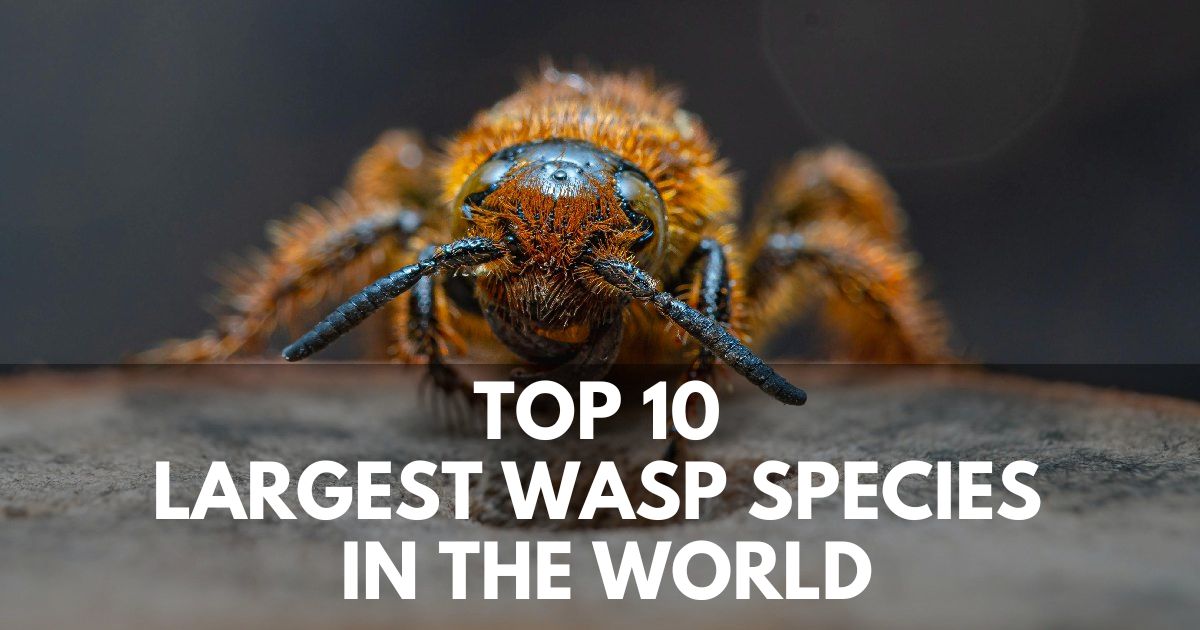Wasps’ extraordinary features and deadly stings compel humanity to treat them with an array admiration and dread. The world’s largest wasp species stands out from other species by their vast dimensions and potent powers. Comprehensive details regarding these enormous wasps’ traits, habitats, and environmental roles can be found in the section below that penetrates into their world.
10. Asian Hornet
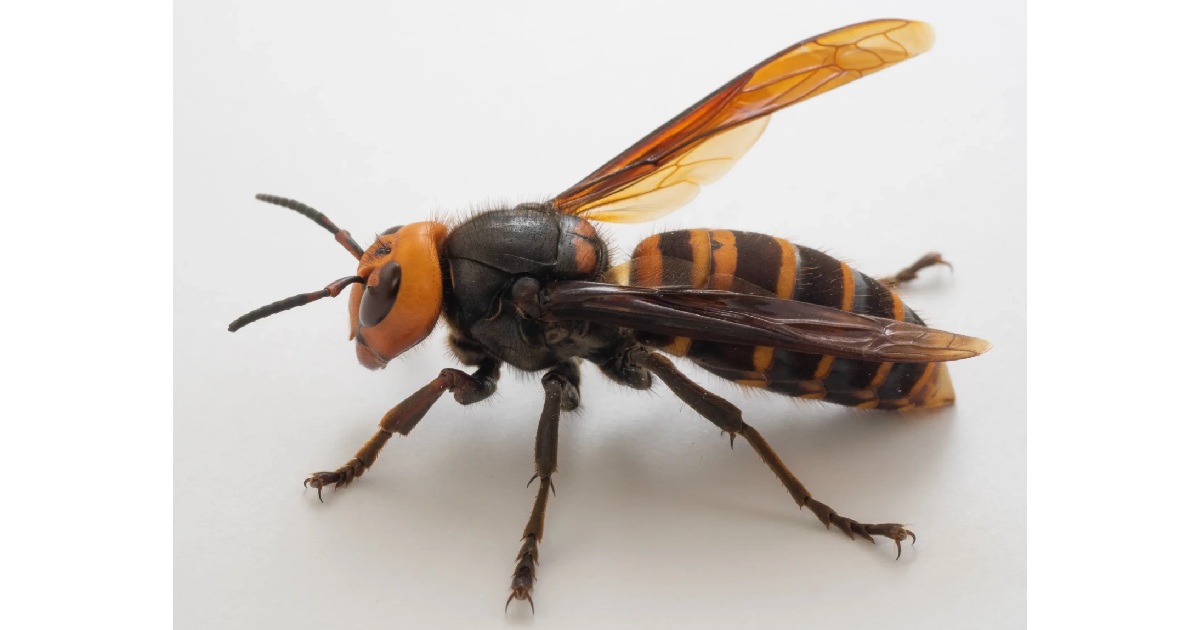
- Size: Up to 3.5 cm (1.4 inches)
- Location: Throughout Asia, recently spotted in Europe
- Key Features: Invasive species
Europeans has reservations about the Asian Hornet, or Vespa velutina, as a native species that threatens local honey bee colonies. This Asian-born hornet eats plenty of bugs but favors honeybees, jeopardizing beekeepers and reproduction. In order to avoid the Asian Hornet from expanding and imposing ecological destruction, substantial precautions were implemented.
Local wildlife and agriculture rely upon Asian Hornet management and surveillance. Quick identification and public involvement are essential for handling outbreaks. Consequently, humans limit the damage that it impose to natural species and landscapes.
9. European Hornet

- Size: Up to 3.5 cm (1.4 inches)
- Location: Europe, North America
- Key Features: Less aggressive than Asian counterparts
The European Hornet, notwithstanding its enormity and form, is more gentle than the Asian Giant Hornet. After arriving in North America, it has adapted into several ecosystems. They inhabit the forests and produce enormous, paper-like dwellings.
The European Hornet actively eliminates pests by eating an array of bugs. These gregarious the hornet inhabit hundreds-person colony. They assist with managing other insects and are less likely to assault people or bee hives with no incitement, which is beneficial to ecology.
8. Western Cicada Killer
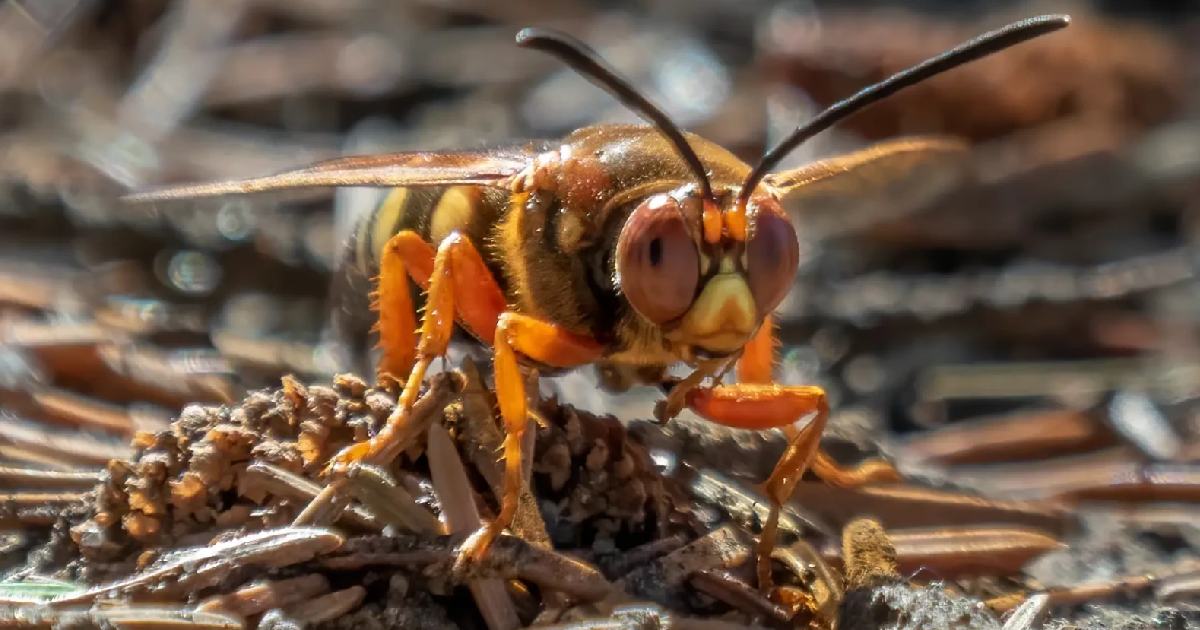
- Size: Up to 4 cm (1.6 inches)
- Location: Western United States
- Key Features: Robust build, solitary, preys on cicadas
The Western Cicada Killer mirrors its eastern counterpart in many ways but is typically found in the arid climates of the Western United States. Like the Eastern Cicada Killer, this species hunts and paralyzes cicadas to provide a food source for its offspring. Its impressive burrowing can often be seen in sandy areas, where it constructs extensive tunnels to house its prey and lay its eggs.
Despite their fearsome hunting skills, Western Cicada Killers are not aggressive towards humans. They do not sting unless directly handled or threatened. Their role in controlling cicada populations makes them beneficial for maintaining the ecological balance and protecting vegetation.
7. Japanese Wasp
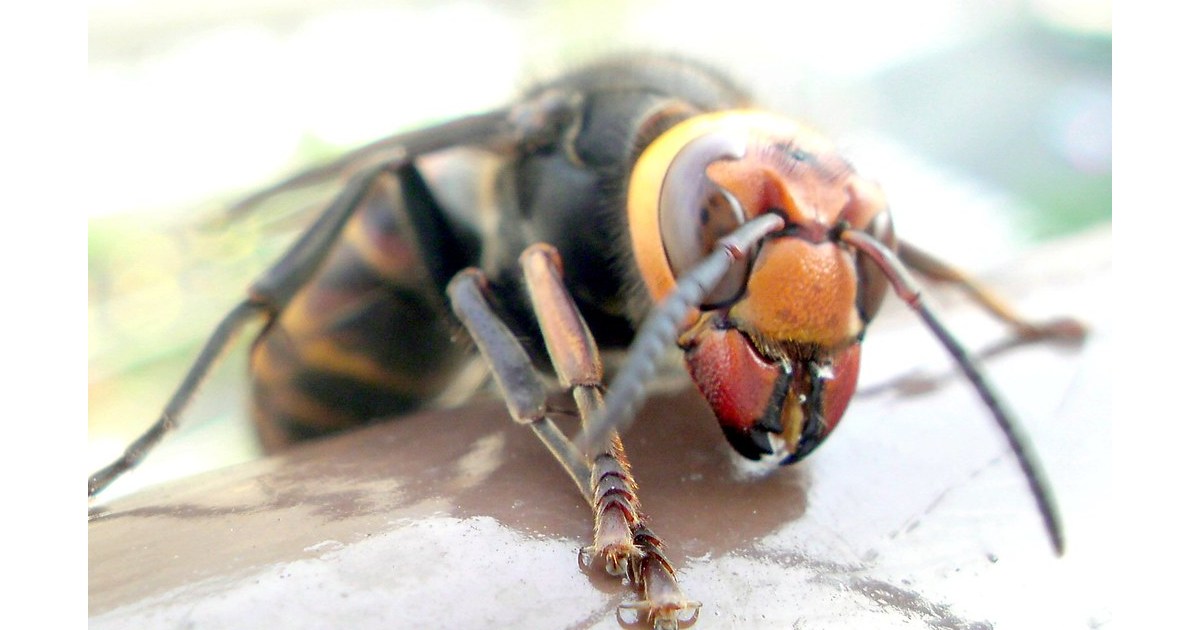
- Size: Up to 4 cm (1.6 inches)
- Location: Japan
- Key Features: Large colonies, aggressive defense
Japanese Wasps, often mistaken for Asian Giant Hornets, establish enormous hives that can fiercely protect their homelands. These wasps are powerful because of their massive stature and deliberate assaults when their cocoons are interrupted. They eat a lot of insects, consequently having them in Japanese woods can change biological processes.
The role of Japanese Wasps in their native ecosystems includes controlling insect populations, thus preventing any single species from becoming dominant. Their aggressive nature, while daunting, is a critical element of their survival strategy. They reflect the complex interplay of competition and predation in natural settings.
6. Northern Giant Hornet
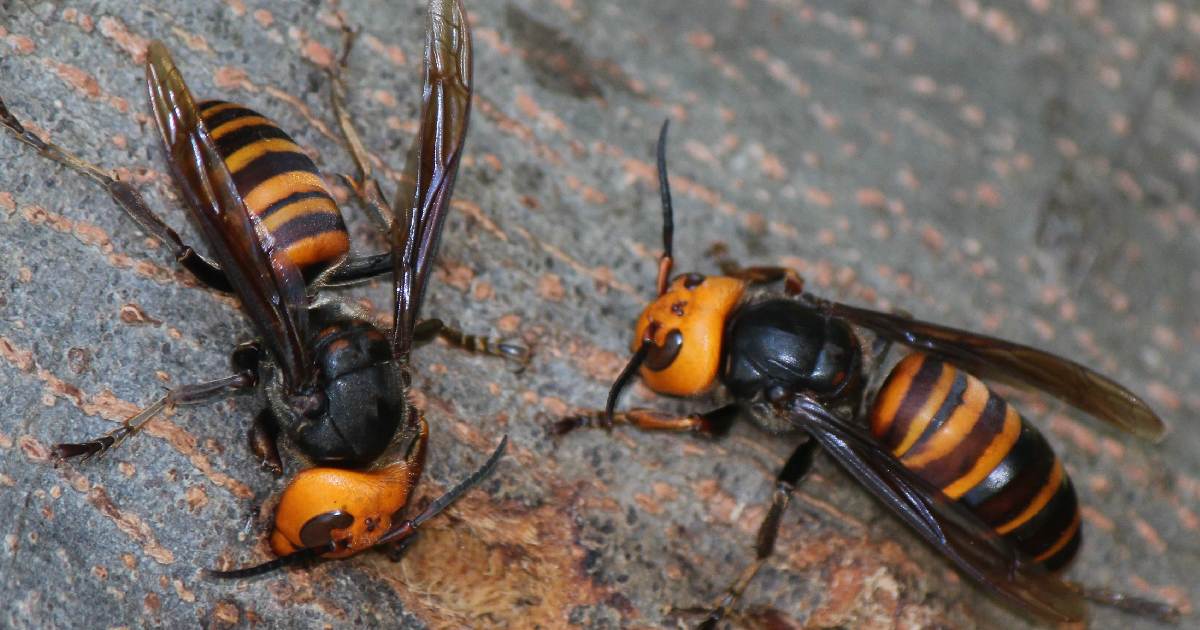
- Size: Up to 4.5 cm (1.8 inches)
- Location: Northern Asia
- Key Features: Predominantly found in forested areas
The Northern Giant Hornet is slightly smaller than its southern counterpart but is equally formidable. This species inhabits northern regions of Asia, preferring dense, forested environments away from human settlements. While it shares many characteristics with the more aggressive Asian Giant Hornet, the Northern variety is less likely to interact with humans.
They are mostly focusing its diet on larger insects and occasionally raiding bee hives. However, these hornets play a crucial role in their native ecosystems as apex predators of other insect species. Their presence helps regulate the populations of pests and maintains the balance within their habitat, highlighting the complexity of their ecological roles.
5. Eastern Cicada Killer
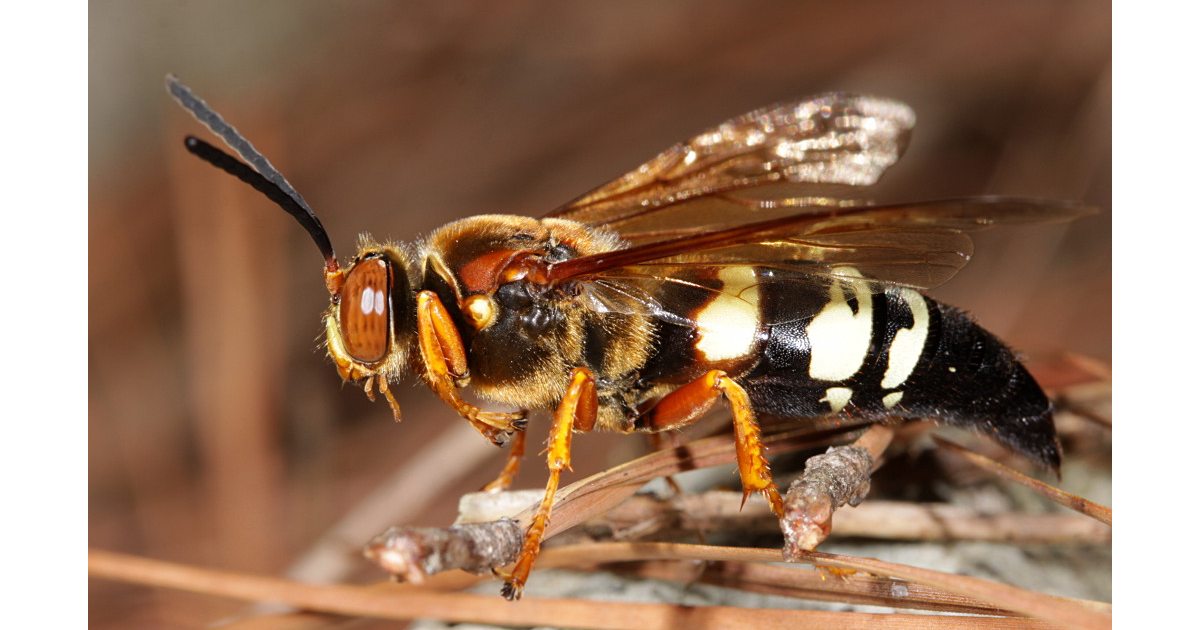
- Size: Up to 5 cm (2 inches)
- Location: Eastern United States
- Key Features: Solitary, burrows in the ground, preys on cicada killer wasp
Sphecius speciosus, renowned as the Eastern Cicada Killer, constitutes one of the largest wasps in the United States. These strong wildlife are recognized for their strange actions when attacking cicadas. They execute this by initially paralyzing them through their sting before pulling them over to their tunnels to serve as meal for their young.
Given their size and reputation, Eastern Cicada Killers show affection for humanity and rarely fight unless provoked. Cicada Killer Wasps govern undesirable cicada groups, which may damage hardwood forests. Their activity helps maintain the health of forests and urban tree lines, showcasing their importance beyond their daunting presence.
4. Giant Hornet Vespa Mandarinia
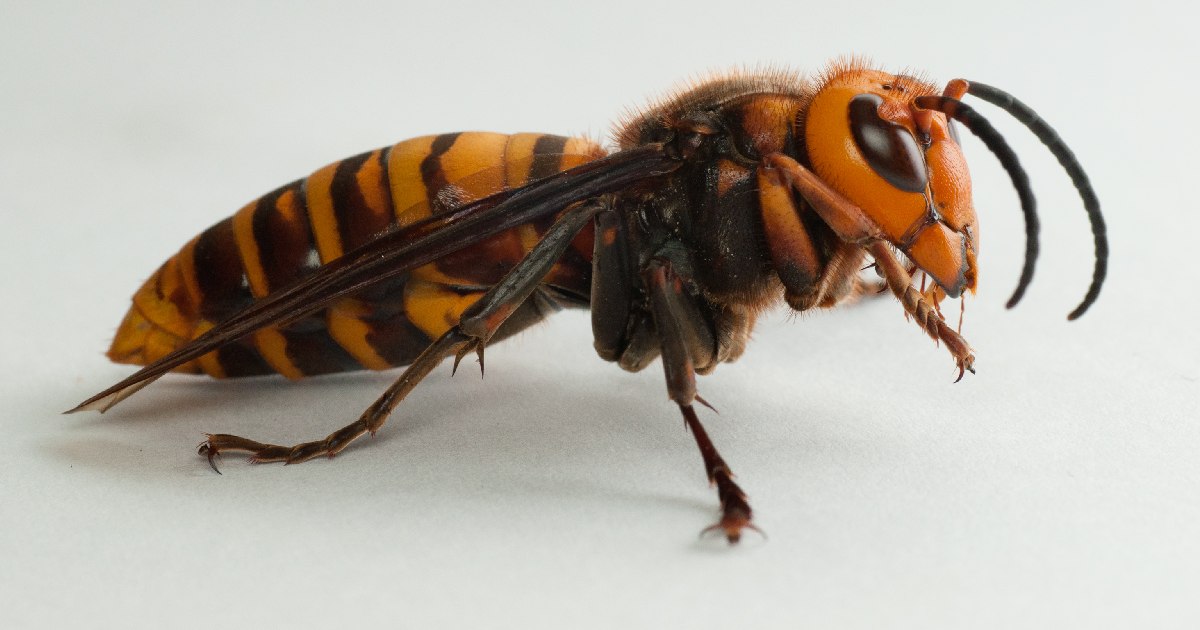
- Size: Up to 5 cm (2 inches)
- Location: East Asia
- Key Features: Known as the “Murder Hornet,” extremely aggressive, can destroy entire hives of honeybees
The Giant Hornet, or Vespa mandarinia, is famously dubbed the “Murder Hornet” due to its aggressive nature and potent venom. Found primarily in East Asia, this species has gained notoriety for its attacks on honeybee hives. Wherein a single hornet can kill thousands of bees in just a few hours.
The venom of these hornets is particularly potent, capable of breaking down tissue and causing significant pain and damage to humans if stung. Their presence in the ecosystem is both a natural wonder and a concern due to its invasive potential. Efforts to control its spread, especially in non-native areas, are crucial to protect local bee populations and the broader agricultural implications tied to pollination.
3. Tarantula Hawk

- Size: Up to 5 cm (2 inches)
- Location: Worldwide, especially in deserts
- Key Features: Hunts tarantulas, extremely painful sting
The Tarantula Hawk Wasp is a striking species, both in appearance and behavior. Known for hunting tarantulas as food for their larvae, these wasps have one of the most painful stings in the insect world, a defense mechanism that ensures their survival and success in reproducing. The vivid blue-black coloration and large size make the Tarantula Hawk one of the most distinctive and studied wasps.
Found in desert regions around the world, these wasps lead solitary lives and have a remarkable method of paralyzing tarantulas with a precise sting. After which they drag the spider to a specially prepared burrow. Their role in controlling tarantula populations is an interesting aspect of ecological checks and balances, despite the fear their sting inspires in humans.
2. Asian Giant Hornets
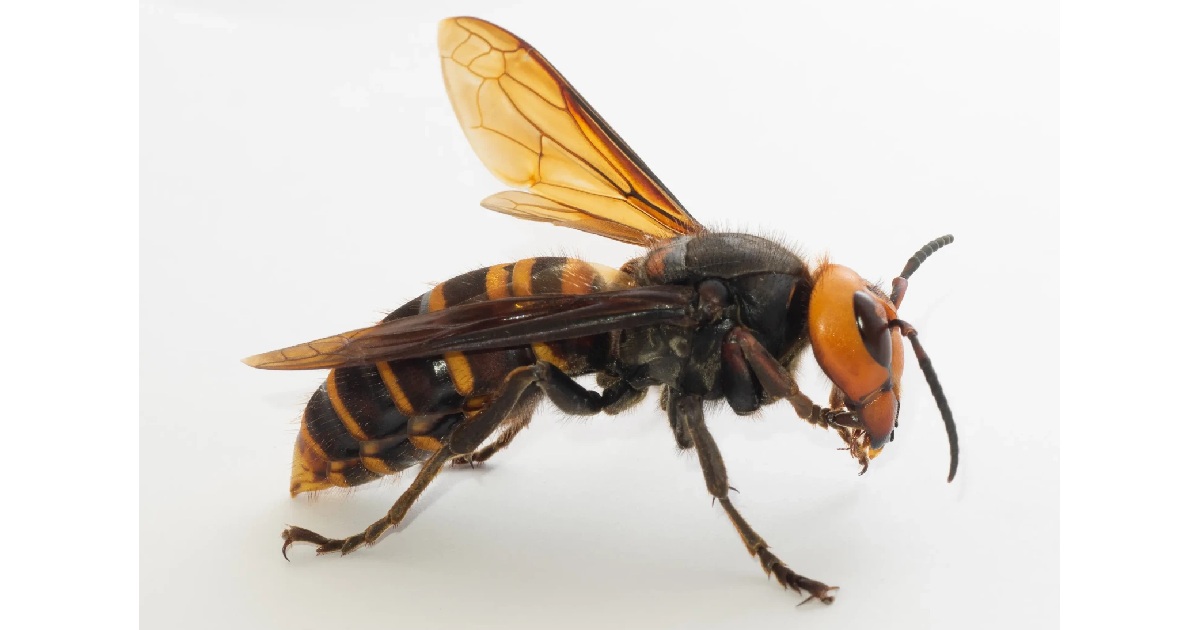
- Size: Up to 5.5 cm (2.2 inches)
- Location: Native to East Asia, invasive in other regions
- Key Features: can inject venom
The Asian Giant Hornet, often dubbed the “murder hornet,” is the biggest hornet species in the world and capable of causing significant ecological disruption. Known for their powerful sting and aggressive behavior, especially towards honeybees, these hornets can decimate entire hives, posing a severe threat to bee populations and the broader ecosystem. Their predation on the entire hive of bees is critical pollinators in many environments, can have cascading effects on plant pollination and agricultural productivity.
The invasive spread of the Asian Giant Hornet in regions like North America has prompted significant concern and efforts towards eradication and control. Monitoring and management strategies are essential to prevent these giant hornets from establishing permanent colonies, which could lead to long-term ecological damage. Understanding and addressing the threats posed by the Asian Giant Hornet are crucial in safeguarding local wildlife and maintaining biodiversity.
1. Giant Scoliid Wasp
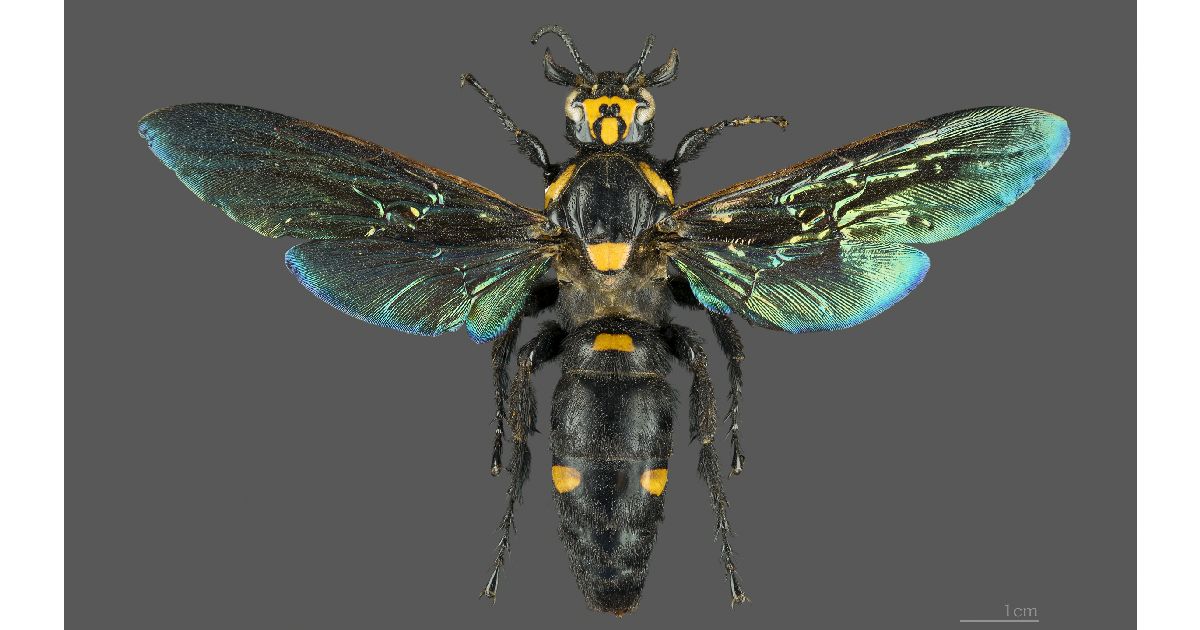
- Size: Up to 6 cm (2.4 inches)
- Location: Africa, Asia
- Key Features: Paralyzes beetles and grubs
The Giant Scoliid Wasp is one of the largest wasp species, with a robust body and powerful sting used to paralyze beetles and other large grubs, which are then used as living food reserves for their larvae. Found in the warmer regions of Africa and Asia, these wasps prefer sandy environments where they can easily dig and create burrows. Despite their daunting size and powerful sting, Giant Scoliid Wasps are not typically aggressive to humans.
They play a beneficial role in controlling beetle populations that can be pests to crops and natural vegetation. Their lifecycle and behavior patterns are fascinating subjects of study, particularly how they manage to overpower and transport significantly larger prey. The ecological role of this giant wasp is a prime example of nature’s balance, controlling pest populations and contributing to the biodiversity of their habitats.
Conclusion
The largest wasp species in the world are not only wonders of nature’s engineering but also pivotal players in their ecosystems. From solitary hunters like the Eastern Cicada Killer to formidable invaders like the Asian Giant Hornet, these species influence the ecological balance, impacting everything from local insect populations to global agricultural practices. Respecting and understanding these giant wasps is key to appreciating their role in the natural world and mitigating the challenges they pose.
Frequently Asked Questions (FAQs)
What is the biggest wasp in the world?
The biggest wasp in the world is the Giant Scoliid Wasp (Megascolia prokles), which can reach up to 2.4 inches (6 cm) in length. This massive wasp, now extinct, was significantly larger than most modern species, including the Asian Giant Hornet.
How big are the Japanese wasps?
Japanese wasps, such as the Japanese Giant Hornet (*Vespa mandarinia japonica*), are quite large, growing up to 2 inches (5 cm) long with a wingspan of about 3 inches (7.6 cm). They are among the larger wasp species and are known for their potent stings.
What is the largest fossil wasp?
The largest fossil wasp is Megascolia prokles, an extinct species from the Cretaceous period. This prehistoric wasp could grow up to 2.4 inches (6 cm) long, making it significantly larger than most modern wasps and showcasing a remarkable size among ancient insects.
What are the most aggressive wasps in the world?
The most aggressive wasps include the Asian Giant Hornet (*Vespa mandarinia*) and Yellow Jackets (*Vespula* spp.). Both species are highly defensive of their nests and can become very aggressive if they perceive a threat, making them particularly dangerous.
What is the deadliest wasp?
The deadliest wasp is often considered to be the Asian Giant Hornet (*Vespa mandarinia*). Its venom can cause severe pain, allergic reactions, and potentially death, especially in cases of multiple stings or severe allergic responses, making it the most hazardous wasp species.

